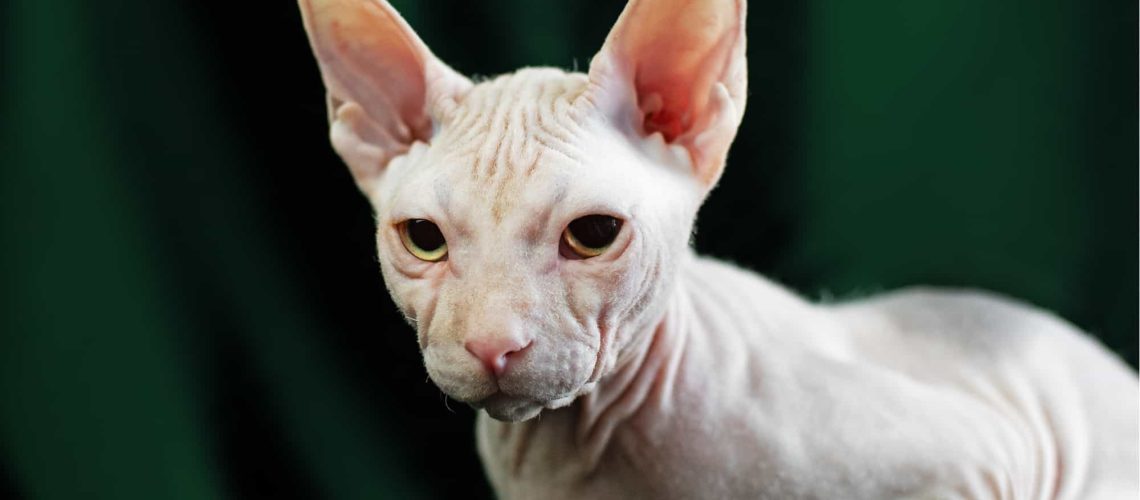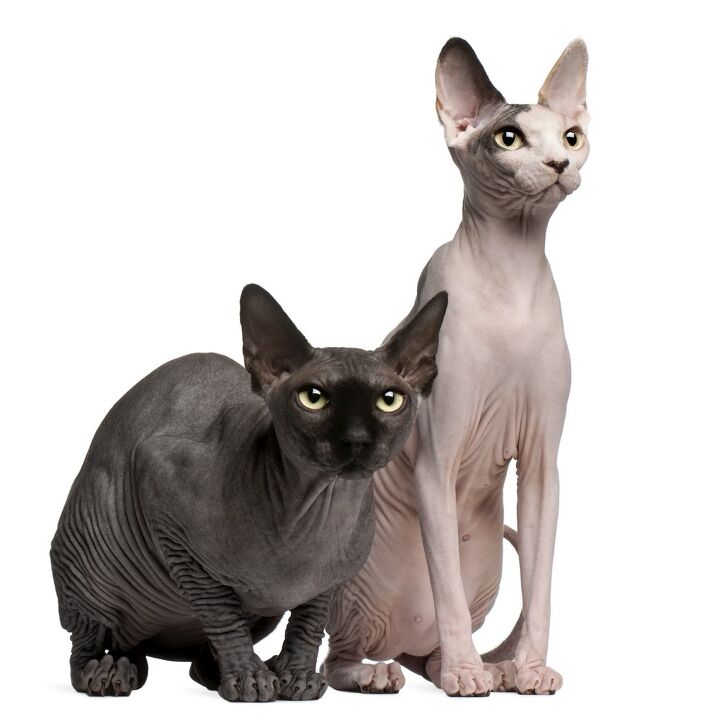Are you ready to embark on a journey into the world of hairless cats? Get ready to discover the secrets of caring for these unique and fascinating creatures. In this comprehensive guide, we will walk you through simple steps on how to provide the best care for your hairless feline friend. By delving into this subject, you will gain valuable knowledge that will help you create a loving and nurturing environment for your beloved pet. From grooming tips to dietary recommendations, we have got you covered. So, let's dive in and unlock the secrets of proper hairless cat care together!
Key Takeaways:
- Regular bathing is essential for hairless cats to keep their skin clean and free from oil buildup.
- Moisturizing the skin is crucial to prevent dryness and flakiness in hairless cats.
- Protecting hairless cats from extreme temperatures is important as they are more susceptible to heatstroke and cold weather.
- Frequent nail trimming is necessary for hairless cats as they do not have fur to naturally wear down their claws.
- Providing a balanced diet with high-quality protein is key to maintaining the overall health of hairless cats.
What is a Hairless Cat and How Are They Different?
The Unique Characteristics of Hairless Cats
Hairless cats, also known as Sphynx cats, are a unique breed that have little to no fur on their bodies. Their skin is usually soft and warm to the touch. Unlike other cats, hairless cats have a higher body temperature which helps them stay warm. They have large ears and expressive eyes that give them a distinctive appearance. Despite their lack of fur, hairless cats are not completely bald - they often have a fine layer of hair called "down" that can be felt when you pet them.
Differences Between Hairless Cats and Cats with Fur
The most obvious difference between hairless cats and cats with fur is their appearance. While most cats have a coat of fur that comes in different colors and patterns, hairless cats lack this outer covering. This makes their skin more visible and prone to sunburn or dryness if not properly cared for. Another difference is the grooming needs - hairless cats do not shed like other cats, so they require regular baths to keep their skin clean and healthy.
Caring for a Hairless Cat's Skin to Keep it Healthy
Moisturizing the Skin
One important aspect of caring for a hairless cat's skin is keeping it moisturized. Since they lack fur, their skin can become dry easily. I recommend using pet-friendly moisturizers specifically made for hairless cats to prevent dryness and maintain the skin's natural oils. Regularly applying these moisturizers will help keep your cat's skin soft and supple.
Sun Protection
Because hairless cats have exposed skin, they are more susceptible to sunburn. Just like humans, their skin can get damaged by the sun's harmful rays. To protect your hairless cat from sunburn, it's important to keep them indoors during peak sunlight hours and apply pet-safe sunscreen to any exposed areas if they need to go outside. Providing shade in outdoor areas where they spend time can also help protect their delicate skin.
Grooming Needs for Hairless Cats Compared to Cats with Fur
Bathing Frequency
Unlike cats with fur that groom themselves by licking, hairless cats require regular baths to keep their skin clean and free from oil buildup. I recommend bathing a hairless cat once every 1-2 weeks using a gentle cat shampoo specifically designed for their sensitive skin. This will help remove any dirt or debris that may accumulate on their skin.
Nail Trimming
Another grooming need for hairless cats is regular nail trimming. Since they don't have fur to wear down their nails naturally, their nails can grow longer and sharper. Regular nail trims not only prevent your cat from scratching you or damaging furniture but also ensure their comfort and mobility.
The Importance of Regular Baths for Hairless Cats and How Often
Bathing is crucial for hairless cats because it helps maintain the health of their skin. Without regular baths, oils and dirt can build up on their skin, leading to clogged pores and potential skin infections. Additionally, frequent baths help remove allergens that may cause allergic reactions in some individuals.
I recommend bathing a hairless cat once every 1-2 weeks using lukewarm water and a mild cat shampoo. It's important to rinse thoroughly to avoid leaving any residue on the skin that could cause irritation.
Dietary Requirements and Considerations for Hairless Cats
High-Quality Protein
Hairless cats have higher metabolic rates compared to cats with fur, so their dietary needs may differ. It's important to provide them with a high-quality cat food that is rich in protein. Protein helps support their muscle development and overall health.
Omega-3 Fatty Acids
Incorporating omega-3 fatty acids into a hairless cat's diet can help promote healthy skin and coat. These essential fatty acids can be found in fish oil supplements or in certain types of cat food formulated for skin health. Consult your veterinarian for the appropriate dosage and recommendations.
Protecting a Hairless Cat from Extreme Temperatures and Sun Exposure
Cold Weather Precautions
Because hairless cats lack insulation from fur, they are more sensitive to cold temperatures. During colder months, it's important to provide them with warm bedding, sweaters, or even heated pads to keep them comfortable and prevent hypothermia.
Sun Protection
Hairless cats are prone to sunburn due to their exposed skin. To protect them from harmful UV rays, it's best to keep them indoors during peak sunlight hours. If they need to go outside, apply pet-safe sunscreen on any exposed areas such as the ears or nose.
Common Health Issues in Hairless Cats and How to Prevent or Treat Them
Hypertrophic Cardiomyopathy (HCM)
HCM is a heart condition that hairless cats may be predisposed to. Regular veterinary check-ups and screenings can help detect this condition early on. Maintaining a healthy diet and providing regular exercise can also help prevent or manage HCM.
Dental Issues
Hairless cats are prone to dental problems such as gum disease and tooth decay. Regular teeth brushing and providing dental treats or toys can help promote good oral hygiene. It's also important to schedule regular dental cleanings with your veterinarian.
In conclusion, caring for a hairless cat is not as complicated as it may seem. By following these simple steps, such as regular bathing and moisturizing their skin, providing a warm environment, and ensuring a balanced diet, you can keep your hairless cat healthy and happy.
How do you take care of a hairless cat?
Maintaining cleanliness in Sphynx cats involves managing their greasiness through diet, but they will still require occasional baths to eliminate dirt and filth that builds up. It is recommended to use mild cat shampoos that are free of soap and contain natural elements such as coconut oil, such as the Earthbath Oatmeal and Aloe dog and cat shampoo.
Are hairless cats easy to take care of?
Taking care of a Sphynx cat can be demanding as they are a high-maintenance breed and need regular grooming, even though they don't have fur.
What are the basic needs of a sphynx cat?
Sphynx cats require protection from the sun and weather elements. There are various ways to keep these cats warm, such as using gentle fabrics in cat apparel that won't irritate their skin. However, since clothes absorb skin oils, they need to be washed regularly to prevent them from becoming dirty.
Can hairless cats be left alone?
If you are unable to commit to not leaving a Sphynx alone at home for extended periods of time, then this breed may not be suitable for you due to their need for companionship and dislike of being left alone.
Do hairless cats hate water?
According to Joan Miller, chair of outreach and education for the Cat Fanciers' Association, Sphynx cats, due to their hairless nature, require regular bathing starting from a young age. As a result, they often enjoy being in water.
Do hairless cats enjoy water?
As previously stated, Sphynx cats require frequent baths and are often fond of water, especially warm water. If you own a Sphynx cat, it is important to bathe them at least once a week to maintain their skin's health.

















